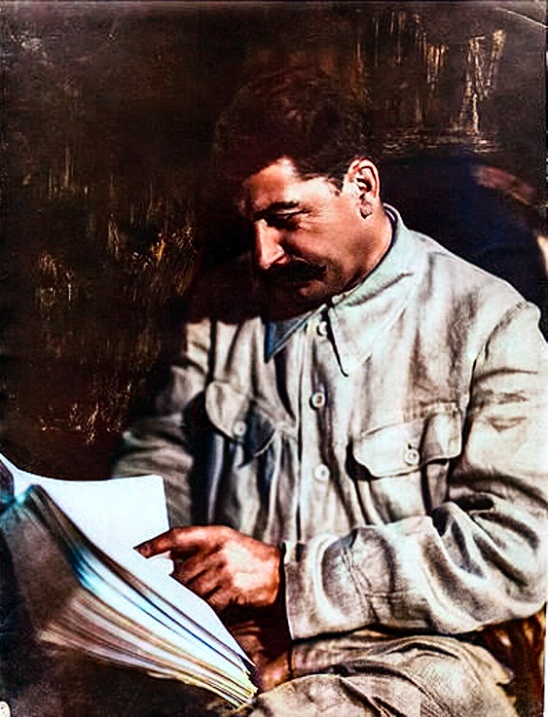Image is of the Power of Siberia natural gas pipeline, which transports gas from Russia to China. This isn’t an oil pipeline (such as the ESPO) but I thought it looked cool. Source here.
Trump has recently proposed a 500% tariff on goods from countries that trade with Russia, including India and China (who buy ~70% of Russia’s oil output), as well as a 10% additional tariff on goods from countries that “align themselves with BRICS.” Considering that China is the largest trading partner of most of the countries on the planet at this point, and India and Brazil are reasonably strong regional players, I’m not sure what exactly “alignment” means, but it could be pretty bad.
Sanctions and tariffs on Russian products have been difficult to achieve in practice. It’s easy to write an order to sanction Russia, but much harder to actually enforce these sorts of things because of, for example, the Russian shadow oil fleet, or countries like Kazakhstan acting as covert middlemen (well, as covert as a very sudden oil export boom can be).
Considering that China was pretty soundly victorious last time around, I’m cautiously optimistic, especially because China and India just outright cutting off their supply of energy and fuel would be catastrophic to them (and if Iran and Israel go to war again any time in the near future, it’ll only be more disastrous). Barring China and India kowtowing to Trump and copying Europe vis-a-vis Nordstream 2 (which isn’t impossible, I suppose), the question is whether China and India will appear to accede to these commands while secretly continuing trade with Russia through middlemen, or if they will be more defiant in the face of American pressure.
Last week’s thread is here.
The Imperialism Reading Group is here.
Please check out the RedAtlas!
The bulletins site is here. Currently not used.
The RSS feed is here. Also currently not used.
Israel-Palestine Conflict
Sources on the fighting in Palestine against Israel. In general, CW for footage of battles, explosions, dead people, and so on:
UNRWA reports on Israel’s destruction and siege of Gaza and the West Bank.
English-language Palestinian Marxist-Leninist twitter account. Alt here.
English-language twitter account that collates news.
Arab-language twitter account with videos and images of fighting.
English-language (with some Arab retweets) Twitter account based in Lebanon. - Telegram is @IbnRiad.
English-language Palestinian Twitter account which reports on news from the Resistance Axis. - Telegram is @EyesOnSouth.
English-language Twitter account in the same group as the previous two. - Telegram here.
English-language PalestineResist telegram channel.
More telegram channels here for those interested.
Russia-Ukraine Conflict
Examples of Ukrainian Nazis and fascists
Examples of racism/euro-centrism during the Russia-Ukraine conflict
Sources:
Defense Politics Asia’s youtube channel and their map. Their youtube channel has substantially diminished in quality but the map is still useful.
Moon of Alabama, which tends to have interesting analysis. Avoid the comment section.
Understanding War and the Saker: reactionary sources that have occasional insights on the war.
Alexander Mercouris, who does daily videos on the conflict. While he is a reactionary and surrounds himself with likeminded people, his daily update videos are relatively brainworm-free and good if you don’t want to follow Russian telegram channels to get news. He also co-hosts The Duran, which is more explicitly conservative, racist, sexist, transphobic, anti-communist, etc when guests are invited on, but is just about tolerable when it’s just the two of them if you want a little more analysis.
Simplicius, who publishes on Substack. Like others, his political analysis should be soundly ignored, but his knowledge of weaponry and military strategy is generally quite good.
On the ground: Patrick Lancaster, an independent and very good journalist reporting in the warzone on the separatists’ side.
Unedited videos of Russian/Ukrainian press conferences and speeches.
Pro-Russian Telegram Channels:
Again, CW for anti-LGBT and racist, sexist, etc speech, as well as combat footage.
https://t.me/aleksandr_skif ~ DPR’s former Defense Minister and Colonel in the DPR’s forces. Russian language.
https://t.me/Slavyangrad ~ A few different pro-Russian people gather frequent content for this channel (~100 posts per day), some socialist, but all socially reactionary. If you can only tolerate using one Russian telegram channel, I would recommend this one.
https://t.me/s/levigodman ~ Does daily update posts.
https://t.me/patricklancasternewstoday ~ Patrick Lancaster’s telegram channel.
https://t.me/gonzowarr ~ A big Russian commentator.
https://t.me/rybar ~ One of, if not the, biggest Russian telegram channels focussing on the war out there. Actually quite balanced, maybe even pessimistic about Russia. Produces interesting and useful maps.
https://t.me/epoddubny ~ Russian language.
https://t.me/boris_rozhin ~ Russian language.
https://t.me/mod_russia_en ~ Russian Ministry of Defense. Does daily, if rather bland updates on the number of Ukrainians killed, etc. The figures appear to be approximately accurate; if you want, reduce all numbers by 25% as a ‘propaganda tax’, if you don’t believe them. Does not cover everything, for obvious reasons, and virtually never details Russian losses.
https://t.me/UkraineHumanRightsAbuses ~ Pro-Russian, documents abuses that Ukraine commits.
Pro-Ukraine Telegram Channels:
Almost every Western media outlet.
https://discord.gg/projectowl ~ Pro-Ukrainian OSINT Discord.
https://t.me/ice_inii ~ Alleged Ukrainian account with a rather cynical take on the entire thing.


Then why don’t just China use its vast amount of wealth to purchase from them? Why not let all these countries tap into the huge Chinese consumer market? Right, because China will then have to increase the wages of its own working class and that will hurt its own export industries against these other Southeast Asian countries.
Ridiculous neoliberal brained defense of free market. Returning to the status quo = wage depression for the rest of Global South countries, but good for China to keep its 5% growth to prop up the financial sector and property markets I guess
China’s imports from ASEAN have been consistently growing.
It’s not the “importance” in trade, it’s how you want to build a new future economic doctrine that can make these developing countries become independent from US imperialism.
I have said this many times, the current trajectory with Trump’s tariffs is just going to intensify the competition of all these countries with China as they have to sell their surplus goods elsewhere. They cannot compete with China - this is a fact. I’m not going to sugarcoat it, but these countries do not have the capacity nor the technology to compete with the Chinese export industries.
This is why many countries are desperately trying to make deals with Trump, because there is nowhere else for their surplus goods to go, and this makes them vulnerable to financial warfare from the US.
More investments from China simply means China helping to build the supply chain for the US, for the US finance capital will take over these assets when businesses begin to fail and countries go into recession.
Ironically this was exactly what happened after the 1997 Asian Financial Crisis with mass IMF bailouts that killed the rise of ASEAN as a regional economic power. And guess who’s in charge of Trump’s trade negotiations these days? That’s right - it’s Scott Bessent. Read my comment here about Bessent and the Asian Financial Crisis.
Do you have any evidence for this
What sort of evidence are you looking for?
All the major Southeast Asian exporters e.g. Thailand, Indonesia, Malaysia are talking about hoping to reach a deal with Trump by the August deadline. These are all over the news. We even have reports from Vietnamese officials saying they felt they were screwed by Trump with the 20% tariff when they thought they had negotiated a lower rate.
If the US trade is really dispensable, these countries could simply not sell to the US and they won’t have to deal with Trump’s tariffs. However, they couldn’t. Why?
This goes to the most fundamental question that I raised above: where else are they going to sell to? If they can’t sell their surplus goods, then the workers will lose their jobs and those countries will enter a recession, and likely have to take IMF loans to bail themselves out of an economic crisis.
So for them, it’s between taking a painful and humiliating deal now, or the humiliation of letting IMF/foreign capital strip off your national assets later when your economy enters a recession. Peer competition makes this pressure even more intense, because your neighbors might get a better deal from Trump and you would turn out to be a loser in this reshuffle. Nobody wants to be the ultimate loser in this race, so they all try to cut a deal with Trump. The goal isn’t even to get the best deal, it’s to not get the worst deal among your peers.
To render Trump’s coercion toothless, somebody else would have to step up to buy the export goods from these countries. There are only three major economies outside of the US that can absorb these surplus goods: China, the EU and Japan.
The EU would have been a good choice ~5 years ago since the euro is a commonly accepted currency that many countries would be happy to save in, but this is no longer possible after the Nord Stream bombing and the EU economies are now entering austerity - i.e. they can no longer play the consumer role to replace the loss US consumption demand. (There is a reason why Trump didn’t start a global trade war back during his first term and only limited to China. The US realized that the EU could pick up the slack. And so Biden’s Ukraine War had to happen so Trump can launch his global tariffs.)
Japan is slowly crawling out of its decades-long zero growth economy but it is still far from having the capacity to absorb the global export surplus.
This really only leaves us with China, with a far larger consumer market that can easily absorb these export goods. I’ve explained the reasons above why China is reluctant to do so so I won’t be repeating them here.